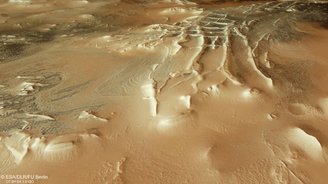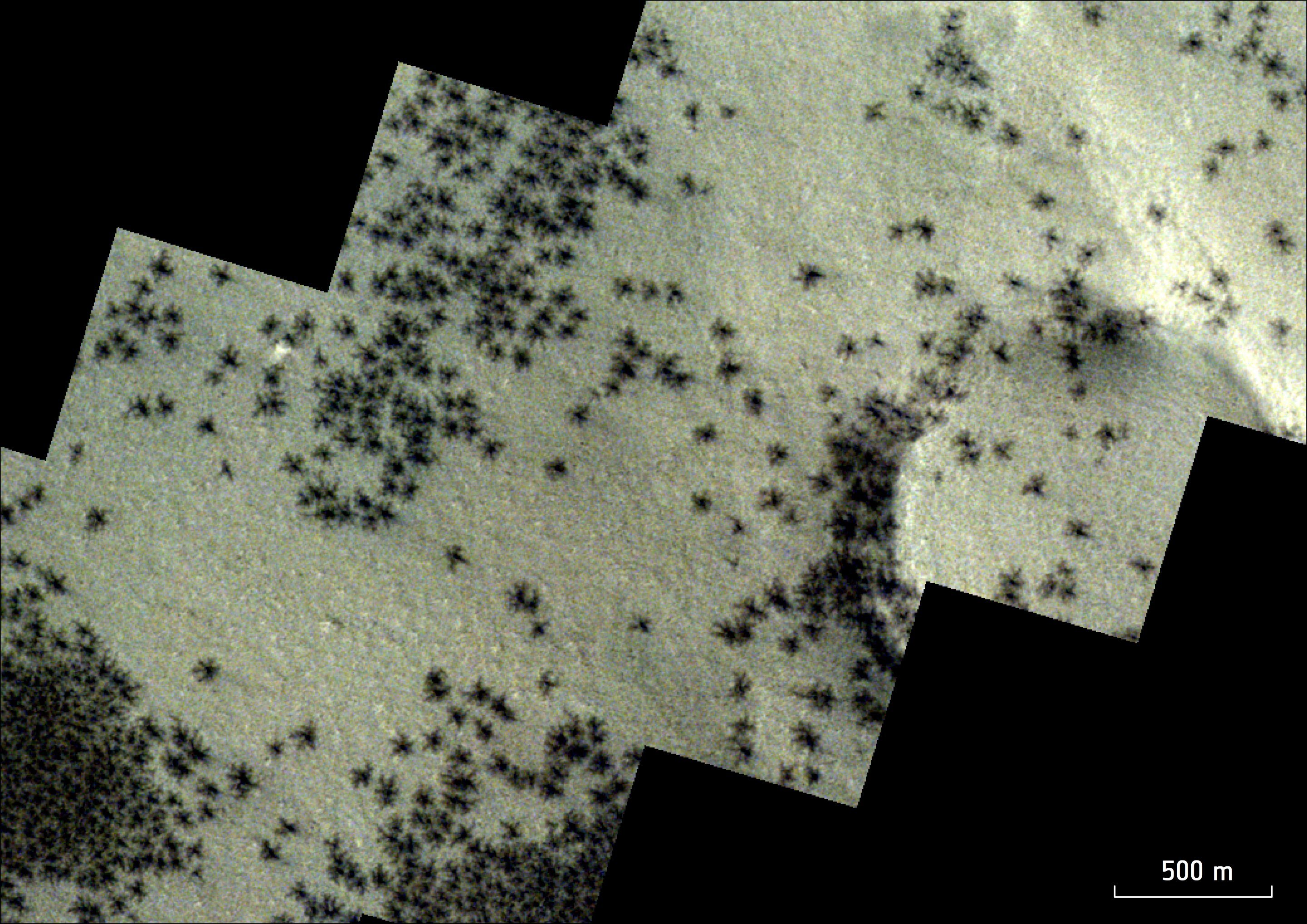From images taken by the Mars Express probe and the ExoMars Trace Gas Orbiter, both from the European Space Agency (ESA). Scientists have found mysterious little spiders in some parts of Mars. In reality, these dark spots are seasonal bursts of carbon dioxide (CO2) due to chemical processes occurring on the red planet.
‘Spiders’ are formed when the spring sun shines on the layers of carbon dioxide that accumulate in these areas during the winter months.. When sunlight hits the area, the underlying CO2 ice will turn to gas and then accumulate into ice sheets.
When spring arrives, gas is released from ice cracks or geysers until it falls and accumulates at the surface. WSince the gas also carries dark dust, dark spots with diameters ranging from 45 meters to 1 kilometer form on the surface of Mars. These are exactly the spots on the ground with a characteristic shape similar to small spiders..
“The resulting dark dust-laden gas rises from cracks in the ice in the form of tall fountains or geysers, then falls back down and settles on the surface. The same process creates the characteristic “spider-shaped” patterns etched into the bottom of the ice, ESA notes in an official statement, so these dark spots are a sign that spiders may be lurking below.
‘Spiders’ on Mars
Most of the dark spots in the image photographed by Mars Express are near the area of Mars known as Inca City. Despite this, the site’s official name is Angustus Labyrinthus, discovered by the Mariner 9 probe during a NASA mission; This tribute derives precisely from the geometric shape of the peaks in the area, similar to that seen in the Inca ruins.

It is not uncommon to find patterns in nature; to contain, This phenomenon is known as pareidolia. In other missions, probes have already photographed areas of Mars with features similar to human faces and even pyramids, but this is just a misinterpretation of our brains. After all, this is just a pattern created by the planet’s natural processes.

“We still don’t know exactly how Inca City was formed. The dunes may have turned to stone over time. Perhaps materials such as magma or sand are seeping through broken layers of rocks on Mars… The ‘walls’ of the Inca City appear to line part of a large circle with a diameter of 86 km. “Scientists therefore suspect that the ‘city’ is located in a large crater formed when a rock from space crashed into the planet’s surface,” ESA adds.
Did you like the content? Stay up to date with more astronomy studies at TecMundo. If you wish, take the opportunity to discover new data that reveals the possibility of life on Mars.
Source: Tec Mundo
I’m Blaine Morgan, an experienced journalist and writer with over 8 years of experience in the tech industry. My expertise lies in writing about technology news and trends, covering everything from cutting-edge gadgets to emerging software developments. I’ve written for several leading publications including Gadget Onus where I am an author.












